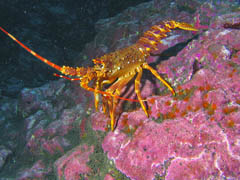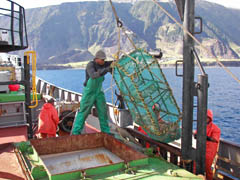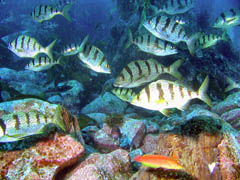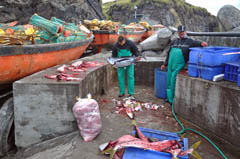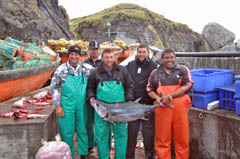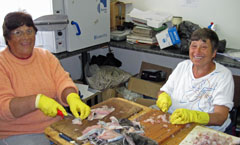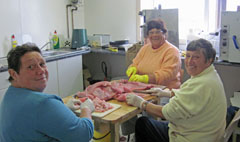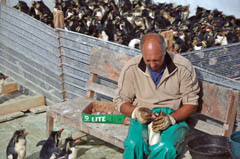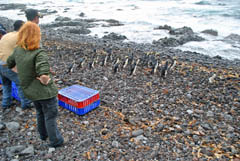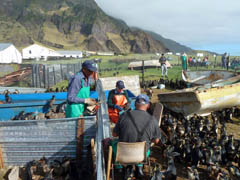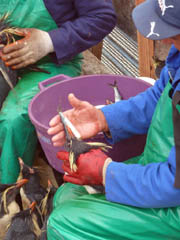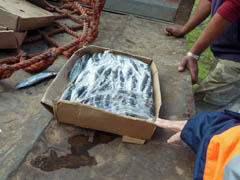News of MS Oliva's impact on Tristan's Fishing Industry
| Start from the beginning or go straight to the Latest News Bulletin of this fast-moving emergency. |
| |||||||||||
30th March 2011 Report from Tristan Director of Fisheries James Glass |
| ||||||||
|
Adapted report from Tristan Director of Fisheries James Glass received Thursday 31st March |
| ||||||||
| |||||||||||||
| Saturday 9th April Report from RSPB Project Officer Katrine Herian Feeding operation continues Meanwhile at the holding pens for oiled penguins the feeding teams were hard at work trying to satisfy the hunger of the many penguins waiting to be washed. Pilchards are being fed to the penguins at the village swimming pool and in the outside pens to build up their strength before undergoing the washing process. To date 3662 penguins have been admitted to the centre, 1577 have died, 69 have been washed and a further 24 released back to sea, so 2061 are being fed daily. |
| Extract from the Public Notice issued by Administrator Sean Burns on 14th April The Fishery The fishery on both islands remains closed. We are in the process of collecting samples and these will return to Cape Town on the Edinburgh with James Glass where they will be tested. We look forward to receiving the test results when we will decide what further action we need to take. We are working closely with the insurers, Ovenstone and various experts on this important aspect of the crisis. |
Fishery Update - Post Oliva A workshop was recently held in Cape Town to assess the latest test fishing data from Nightingale and the lobster juvenile surveys at Nightingale and Inaccessible. Nightingale Island Fishery |
See also: Details of the first phase of the disaster up to Monday 21st March : Oliva Wreck 1 A diary of the clean-up operation on Nightingale and Inaccessible from 21st March: Oliva Phase II News News and pictures of the back-up operation on the main Tristan da Cunha Island : Oliva Tristan Diary A page providing a Tristan Government view of the Oliva disaster as it unfolds: Oliva Government News Want to help? - Link to our How to Help Page Report explaining the cause of the grounding and safety lessons learned: MS Oliva Safety Report MS Oliva Disaster Home Page |

